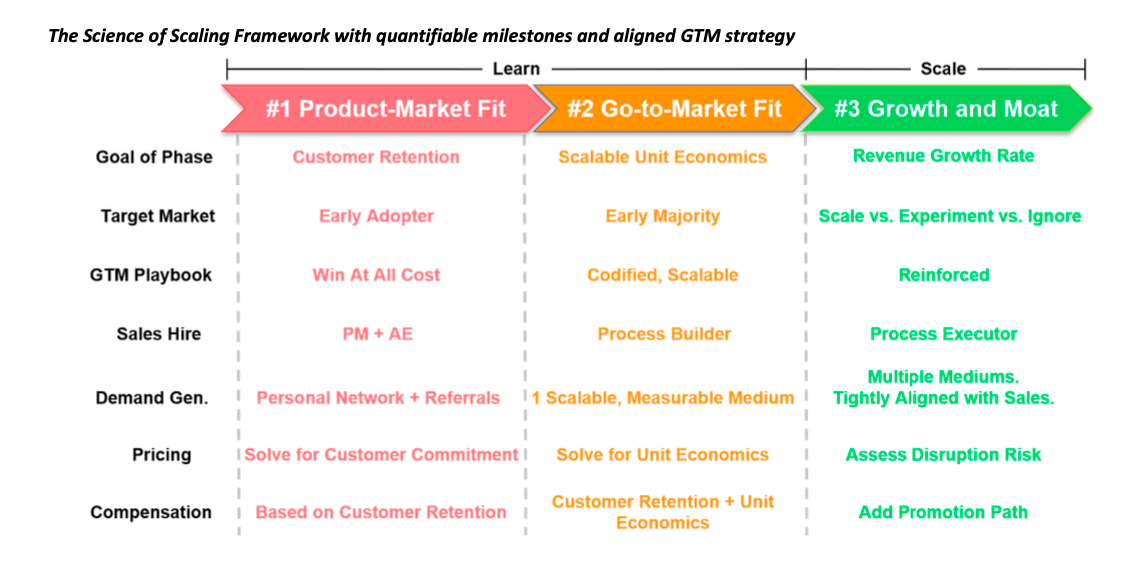Product Strategy

1. Product-Market Fit - generating customer success consistently
2. Go-to-Market Fit - generating customer success consistently and scalably
3. Growth and Moat- pace and defensibility of scale
The Science of Scaling
- People pay you money: Several people start to pay for your product, ideally people you don’t have a direct connection to
- Continued usage: People continue to use your prototype product, even if it’s hacky
- Strong emotion: You’re hearing hatred for the incumbents (i.e. pain) or a deep and strong emotional react
Lenny Rachitsky • How to validate your B2B startup idea
“Many investors will say that the total addressable market (TAM) size is the primary indication of ‘venture scale,’ but I disagree. You can have large TAMs that actually aren’t very good markets for startups, and smaller markets that can be expanded by the abilities of a talented startup with the right product offering.... See more
So instead I tell founders t
Lenny Rachitsky • Your startup idea probably isn’t venture-scale
2. How much pain are you solving?
On a scale of 1 to 10, how painful is the status quo? Is it a 9-10, or is it 4-5? It’ll be hard to get people to pay a lot of money, or to switch from a good-enough product, if there isn’t a lot of pain.
On a scale of 1 to 10, how painful is the status quo? Is it a 9-10, or is it 4-5? It’ll be hard to get people to pay a lot of money, or to switch from a good-enough product, if there isn’t a lot of pain.
Lenny Rachitsky • Your startup idea probably isn’t venture-scale
1. Is my market big enough?
Do the math. What would have to be true for your business to reach $100M in revenue in one year? How many people would need to be using it (and/or paying for it), and how much should you need to make per user?
Do the math. What would have to be true for your business to reach $100M in revenue in one year? How many people would need to be using it (and/or paying for it), and how much should you need to make per user?
Lenny Rachitsky • Your startup idea probably isn’t venture-scale
a spectrum that provides a useful guide to finding ever-increasing PMF:
- Step 1: Get one company to love your product
- Step 2: Get one company to pay (a meaningful amount of money) for your product
- Step 3 : Get more than one company to love and pay for your product
- Step 4: Start noticing a shift from push to pull, and organic growth
- Step 5: Keep grow
Lenny Rachitsky • A guide for finding product-market fit in B2B
No matter which path you take, you are looking for two things: pain and pull . Pain tells you there’s an opportunity to solve a problem, and that it’s important. Pull tells you that you’re actually solving the problem.
Lenny Rachitsky • How the most successful B2B startups came up with their original idea
Ingredient 2: The market is underserved
Existing solutions need to be doing a subpar job of solving the problem. The founder of CRED, Kunal Shah, has a great framework for evaluating potential new solutions, called Delta-4:
Your solution needs t... See more
Existing solutions need to be doing a subpar job of solving the problem. The founder of CRED, Kunal Shah, has a great framework for evaluating potential new solutions, called Delta-4:
- What would a customer rate the existing solution on a scale of 1 to 10?
- What would they rate your solution?
Your solution needs t... See more
